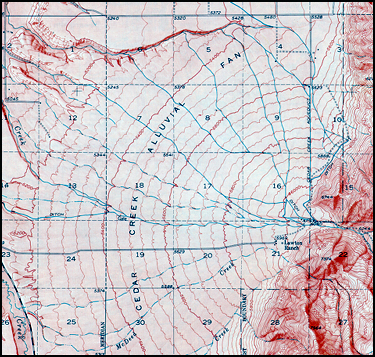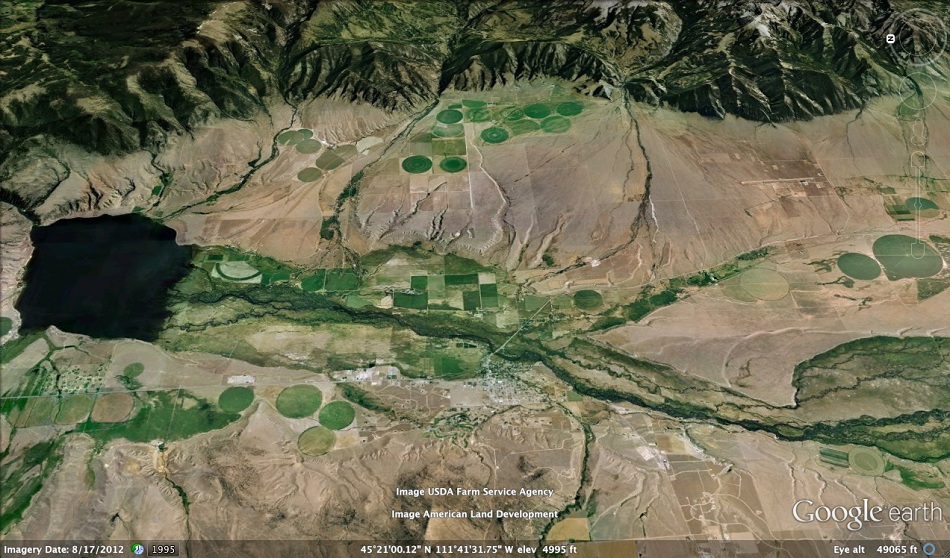|
The Perfect
Alluvial Fan
 The area shown on the map is located a 5
miles southeast of Ennis (30 miles northwest
of
Yellowstone Park). A photo of the area is
shown to the right. The map, which represents an
area about 5 miles x 5 miles, was copied from
an older USGS contour map. Such maps,
often called topographic, or "topo" maps, use
contour lines to show the shape of the land.
Older ones also used shading to help the
map-reader visualize the topography.
The area shown on the map is located a 5
miles southeast of Ennis (30 miles northwest
of
Yellowstone Park). A photo of the area is
shown to the right. The map, which represents an
area about 5 miles x 5 miles, was copied from
an older USGS contour map. Such maps,
often called topographic, or "topo" maps, use
contour lines to show the shape of the land.
Older ones also used shading to help the
map-reader visualize the topography.
What's so special about this area?. . .
The significance of this map is that the
contour lines reveal a distinct fan-shaped
formation in the area where Cedar Creek
flows out of the Madison Range. The
formation, called the Cedar Creek Alluvial Fan,
is one of the best examples of an alluvial fan
in the world and it is sometimes featured in
geology textbooks.
How did it get there?. . .
Streams such as Cedar Creek transport a
variety of rock materials, including clays, silts,
sands and gravels. Where streams flow from
steep slopes onto flatter areas they slow
down, losing their ability to efficiently transport
gravels and larger sands. The smaller
pieces, including clays, silts, and some sands
continue to go where the water takes them
while the gravels begin to build up at the edge
of the valley. Eventually so much gravel is
deposited that the stream changes its course,
and the process repeats itself over and over
and the fan-shaped deposit takes form.
That's exactly what has happened here. Since
the last ice age ended about 10,000 years
ago, Cedar Creek has carried gravels out of
the mountains and deposited them on the
edge of the valley, forming this classic alluvial
fan.
Below: Move your cursor over this Google Earth image of the Cedar Creek
alluvial fan shows what the area would look like if your were approaching (flying) from the west. You can see Ennis Lake, the town of Ennis, and Cedar Creek cutting through the alluvial fan. Cedar Creek is a tributary of the Madison River which flows northward (right to left across the center of the image) into Ennis Lake.
Soils have developed on top
of the gravels, and grasses have taken root.
Cedar Creek continues to wind its way over
the fan.

Term: alluvium
|


